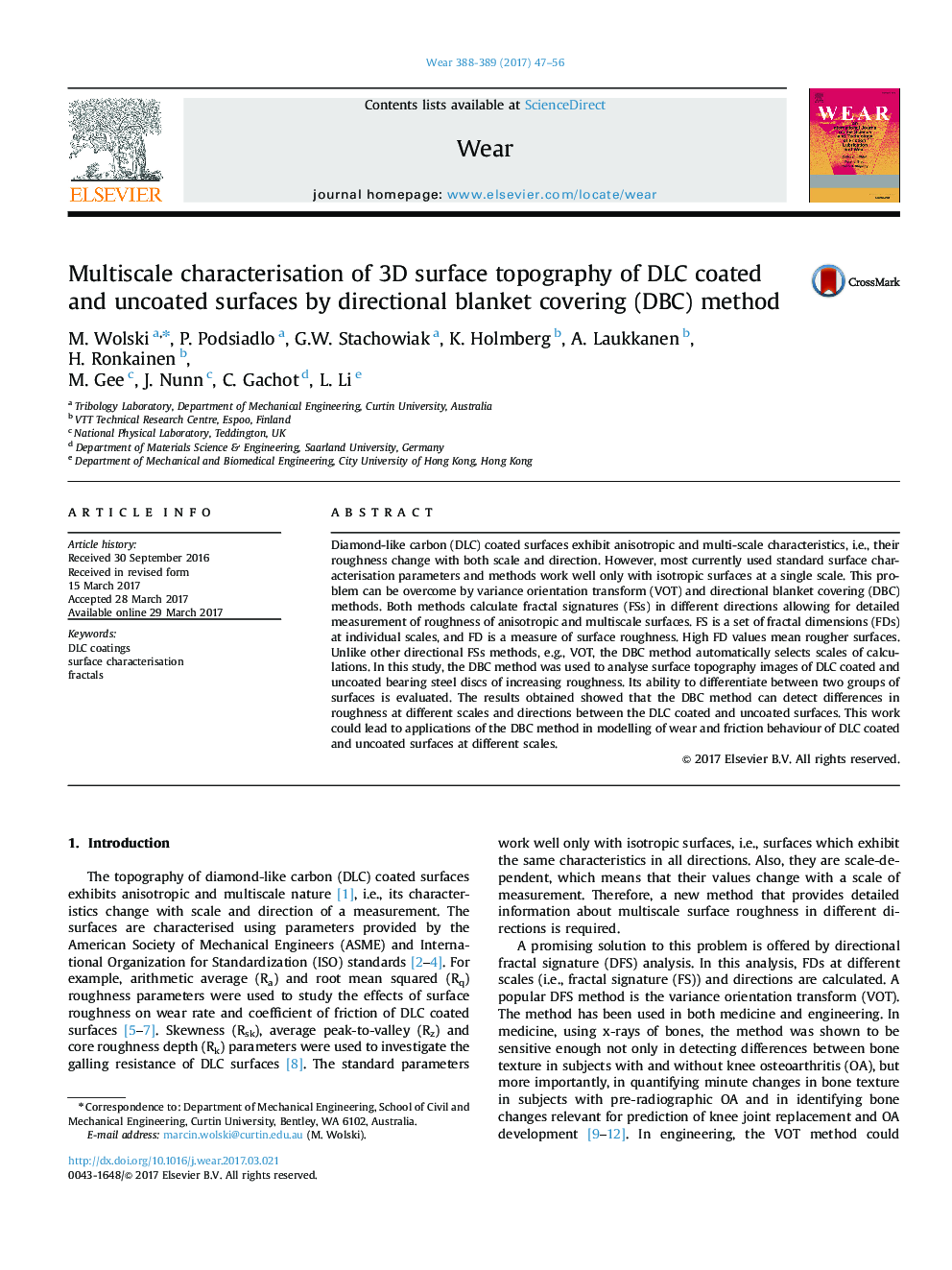| Article ID | Journal | Published Year | Pages | File Type |
|---|---|---|---|---|
| 4986412 | Wear | 2017 | 10 Pages |
Abstract
Diamond-like carbon (DLC) coated surfaces exhibit anisotropic and multi-scale characteristics, i.e., their roughness change with both scale and direction. However, most currently used standard surface characterisation parameters and methods work well only with isotropic surfaces at a single scale. This problem can be overcome by variance orientation transform (VOT) and directional blanket covering (DBC) methods. Both methods calculate fractal signatures (FSs) in different directions allowing for detailed measurement of roughness of anisotropic and multiscale surfaces. FS is a set of fractal dimensions (FDs) at individual scales, and FD is a measure of surface roughness. High FD values mean rougher surfaces. Unlike other directional FSs methods, e.g., VOT, the DBC method automatically selects scales of calculations. In this study, the DBC method was used to analyse surface topography images of DLC coated and uncoated bearing steel discs of increasing roughness. Its ability to differentiate between two groups of surfaces is evaluated. The results obtained showed that the DBC method can detect differences in roughness at different scales and directions between the DLC coated and uncoated surfaces. This work could lead to applications of the DBC method in modelling of wear and friction behaviour of DLC coated and uncoated surfaces at different scales.
Related Topics
Physical Sciences and Engineering
Chemical Engineering
Colloid and Surface Chemistry
Authors
M. Wolski, P. Podsiadlo, G.W. Stachowiak, K. Holmberg, A. Laukkanen, H. Ronkainen, M. Gee, J. Nunn, C. Gachot, L. Li,
